Until lately, the causal agent of Botryosphaeria canker was assumed to vary from that inflicting ring rot on fruit and warts on branches on apple bushes in China and East Asia. However, latest analysis documented that Botryosphaeria dothidea caused each illness symptoms on apple. Inoculations with strains remoted from cankers and warts on branches have been carried out to research symptom development caused by B. dothidea and circumstances inducing the 2 symptom sorts. The outcomes confirmed that each cankers and warts are caused by B. dothidea.
Warts are the outcomes of hyperplasia and suberization of bark tissues induced by fungal an infection, whereas cankers end result from the speedy progress of hyphae from inside warts, lenticels or wounds. Resistance to B. dothidea exists in dwelling apple branches. When a dwelling department is contaminated by way of lenticels, the pathogen induces proliferation and suberization of cortical cells that restricts the expansion and enlargement of the hyphae, resulting in wart symptom. However, below sure stress circumstances resembling drought, the hyphae inside host tissues broaden quickly and kill cortical cells, resulting in canker improvement.
Host resistance might get well throughout energetic progress durations, which suppresses and even stops speedy enlargement of the hyphae, resulting in the intermediate symptom of canker warts. Abiotic elements, resembling drought or excessive temperature in early spring, can lead to speedy extension of colonized hyphae in branches and conversion of warts to cankers. Preventing this transition will be an essential measure in managing Botryosphaeria canker on apple.
Predictive Modeling of Brown Rust of Sugarcane Based on Temperature and Relative Humidity in Florida
Logistic regression fashions have been developed from 5 years (2014-2018) of illness severity and climate information in an try and predict brown rust of sugarcane on the Everglades Research and Education Center (EREC) in Belle Glade, Florida. Disease severity (proportion space of the highest seen dewlap leaf lined by rust) was visually assessed within the subject each two weeks for 2 varieties inclined to brown rust.
Two hundred fifty variables have been derived from climate information for 10 to 40-day durations earlier than every brown rust evaluation day. A subset of these variables have been then evaluated as potential predictors of severity of brown rust primarily based on their particular person correlation and/or their organic meaningfulness. The prediction accuracy of these fashions ranged from 73-85%. Single variable mannequin BR2 (primarily based on AHTR) labeled 89% of the epidemic and 81% of the non-epidemic standing of the illness.
Analyses of correlation and stepwise logistic regression allowed us to determine afternoon humid thermal ratio (AHTR), temperature-based period variables, and their interplay phrases as essentially the most vital variables related to brown rust epidemics of sugarcane in Florida. The 9 finest predictive fashions have been recognized primarily based on mannequin accuracy, sensitivity, specificity and estimates of the prediction error. Greater than 83% of the epidemics and 81% of the non-epidemic standing of sugarcane brown rust was accurately labeled utilizing a number of variable fashions. These fashions can doubtlessly be used as elements of a rust illness warning system to help within the administration of brown rust epidemics of sugarcane in south Florida.
Severe acute respiratory syndrome coronavirus 2 causes direct injury to the airway epithelium, enabling aspergillus invasion. Reports of COVID-19-associated pulmonary aspergillosis have raised considerations about it worsening the illness course of COVID-19 and growing mortality. Additionally, the primary instances of COVID-19-associated pulmonary aspergillosis caused by azole-resistant aspergillus have been reported.
This article constitutes a consensus assertion on defining and managing COVID-19-associated pulmonary aspergillosis, ready by consultants and endorsed by medical mycology societies. COVID-19-associated pulmonary aspergillosis is proposed to be outlined as doable, possible, or confirmed on the premise of pattern validity and thus diagnostic certainty. Recommended first-line remedy is both voriconazole or isavuconazole. If azole resistance is a priority, then liposomal amphotericin B is the drug of alternative. Our intention is to supply definitions for medical analysis and up-to-date suggestions for medical administration of the prognosis and therapy of COVID-19-associated pulmonary aspergillosis.
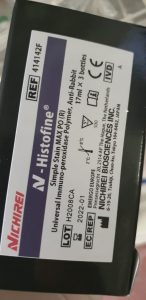
From Hashtag to High School: How Viral Tweets Are Inspiring Young Scientists To Embrace STEM
Social media is an more and more essential skilled software for scientists. In explicit, scientists use their social media profiles to speak science and construct communities with like-minded scientists and nonscientists. These networks embrace journalists who can amplify social media science communication, disseminating it to new audiences on- and offline. Our expertise with an outreach challenge the place Peeps marshmallows have been inoculated with various fungi, which we referred to as #FungalPeeps, has demonstrated that these networks will be an efficient conduit between analysisers and highschool college students.
 Dual Luciferase Reporter Assay Kit |
|
DL101-01 |
Vazyme |
100 rxn |
EUR 90.5 |
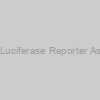 Single-Luciferase Reporter Assay Kit |
|
20-abx098133 |
Abbexa |
-
Ask for price
-
Ask for price
|
|
|
|
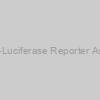 Double-Luciferase Reporter Assay Kit |
|
20-abx098134 |
Abbexa |
-
Ask for price
-
Ask for price
|
|
|
|
 Single-Luciferase Reporter Assay Kit |
|
abx098133-100l |
Abbexa |
100 µl |
EUR 650 |
 Single-Luciferase Reporter Assay Kit |
|
abx098133-1ml |
Abbexa |
1 ml |
Ask for price |
 Single-Luciferase Reporter Assay Kit |
|
abx098133-200l |
Abbexa |
200 µl |
EUR 762.5 |
 Double-Luciferase Reporter Assay Kit |
|
abx098134-100l |
Abbexa |
100 µl |
EUR 687.5 |
 Double-Luciferase Reporter Assay Kit |
|
abx098134-1ml |
Abbexa |
1 ml |
Ask for price |
 Double-Luciferase Reporter Assay Kit |
|
abx098134-200l |
Abbexa |
200 µl |
EUR 900 |
 PDE1B Cell-Based Reporter Assay Kit |
|
GWB-PS8329 |
GenWay Biotech |
500reactions |
Ask for price |
 Luciferase Reporter Gene Assay Kit |
|
Z5030001 |
Biochain |
200 assays |
EUR 329 |
 Luciferase Reporter Gene Assay Kit |
|
Z5030002 |
Biochain |
500 assays |
EUR 636 |
 Luciferase Reporter Gene Assay Kit |
|
Z5030003 |
Biochain |
1,000 assays |
EUR 1118 |
 Reporter Assay Kit) Single-Luciferase (Renilla) Reporter Assay Kit |
|
20-abx298011 |
Abbexa |
-
Ask for price
-
Ask for price
|
|
|
|
 Reporter Assay Kit) Single-Luciferase (Renilla) Reporter Assay Kit |
|
abx298011-100g |
Abbexa |
100 µg |
Ask for price |
 Reporter Assay Kit) Single-Luciferase (Renilla) Reporter Assay Kit |
|
abx298011-20g |
Abbexa |
20 µg |
EUR 675 |
 Reporter Assay Kit) Single-Luciferase (Renilla) Reporter Assay Kit |
|
abx298011-50g |
Abbexa |
50 µg |
EUR 850 |
 Notch Signaling Pathway Notch1/CSL Reporter - HEK293 Cell Line |
|
60652 |
BPS Bioscience |
2 vials |
EUR 2175 |
|
Description: The Notch CSL Reporter - HEK293 cell line contains the firefly luciferase gene under the control of Notch-response elements (CSL responsive elements) alone with expression construct for Notch1 E (NOTCH1 that has a deletion of the entire extracellular domain) stably integrated into HEK293 cells. Inside the cells, the Notch1 E can be cleaved by γ-secretase. The active Notch1 NICD is released to nucleus and induces the constitutive expression of luciferase reporter. The cell line is validated for the inhibition of the expression of luciferase reporter using a known inhibitor of the Notch signaling pathway. |
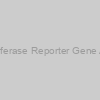 Dual Luciferase Reporter Gene Assay Kit |
|
KTA8010-1000T |
Abbkine |
1000 T |
EUR 819 |
 Dual Luciferase Reporter Gene Assay Kit |
|
KTA8010-100T |
Abbkine |
100 T |
EUR 149 |
 Dual Luciferase Reporter Gene Assay Kit |
|
KTA8010-each |
Abbkine |
each |
Ask for price |
) Notch1 Pathway Reporter Kit (Human) |
|
79503 |
BPS Bioscience |
500 rxns. |
EUR 650 |
|
Description: Notch Pathway Reporter kit is designed for monitoring the activity of the Notch signaling pathway in cultured cells. The kit contains a transfection-ready expression vector for Human NOTCH1 that has a deletion of the entire extracellular domain, leaving the transmembrane and intracellular domains intact (Notch1DE). Inside the cells, the NOTCH1 DE is cleaved by γ-secretase and active NOTCH1 NICD is released into the nucleus. The kit also contains CSL (CBF1/RBP-Jk) luciferase reporter vector, which is a Notch pathway-responsive reporter. This reporter contains the firefly luciferase gene under the control of multimerized CSL responsive elements upstream of a minimal promoter. The CSL (CBF1/RBP-Jk) reporter is premixed with constitutively expressing Renilla (sea pansy) luciferase vector, which serves as an internal positive control for transfection efficiency._x000D_The kit also includes a non-inducible firefly luciferase vector premixed with constitutively-expressing Renilla luciferase vector as a negative control. The non-inducible luciferase vector contains a firefly luciferase gene under the control of a minimal promoter, but without any additional response elements. The negative control is critical for determining pathway specific effects and background luciferase activity._x000D_This kit contains the expression vector for Human Notch1DE. We also offer the Mouse Notch1DE expression vector (BPS Bioscience #60509), as well as a Mouse Notch1 NICD expression vector, which is constitutively active without processing by γ-secretase (BPS Bioscience #79504)._x000D_ |
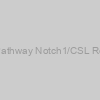 Human Notch Signaling Pathway Notch1/CSL Reporter Cell Line-HEK293 |
|
ABC-RC0116 |
AcceGen |
1 vial |
Ask for price |
|
Description: Human Notch Signaling Pathway Notch1/CSL Reporter Cell Line is derived from HEK293. Application: • Monitor Notch signaling pathway activity.• Screen for activators or inhibitors of the Notch signaling pathway. |
 RARα Reporter Cellular Assay Pack |
|
79322 |
BPS Bioscience |
2 vials |
EUR 2390 |
|
Description: The RARα Reporter Cellular Assay Pack provides all the key reagents required to monitor the activity of retinoic acid receptor alpha (RARα). The pack contains the RARα Reporter (Luc)-HEK293 Cell Line, a luciferase reporter cell line that contains a firefly luciferase gene under the control of retinoic acid response elements stably integrated into HEK293 cells along with full length human RARα (GenBank Accession No. NM_000964). This cell line is functionally validated for the response to the stimulation of all-trans retinoic acid, and the expression of RARα is confirmed by Western blotting._x000D_Additionally, the pack includes cell culture medium (Thaw Medium 6) that has been optimized for use with HEK293 cells. Thaw Medium 6 includes 10% fetal bovine serum and 1% Pen/Strep. Finally, the pack provides the ONE-Step™ Luciferase Detection System. This reagent provides highly sensitive, stable detection of firefly (Photinus pyralis) luciferase activity. The ONE-Step luciferase reagent can be used directly in cells in growth medium, and can be detected with any luminometer; automated injectors are not required. |
 RARβ Reporter Cellular Assay Pack |
|
79323 |
BPS Bioscience |
2 vials |
EUR 2050 |
|
Description: The RARβ Reporter Cellular Assay Pack provides all the key reagents required to monitor the activity of retinoic acid receptor beta (RARβ). The pack contains the RARβ Reporter (Luc)-HEK293 Cell Line, a luciferase reporter cell line that contains a firefly luciferase gene under the control of retinoic acid response elements stably integrated into HEK293 cells along with full length human RARα (GenBank Accession No. P10826-2). This cell line is functionally validated for the response to the stimulation of all-trans retinoic acid, and the expression of RARβ is confirmed by Western blotting._x000D_Additionally, the pack includes cell culture medium (Thaw Medium 6) that has been optimized for use with HEK293 cells. Thaw Medium 6 includes 10% fetal bovine serum and 1% Pen/Strep. Finally, the pack provides the ONE-Step™ Luciferase Detection System. This reagent provides highly sensitive, stable detection of firefly (Photinus pyralis) luciferase activity. The ONE-Step luciferase reagent can be used directly in cells in growth medium, and can be detected with any luminometer; automated injectors are not required. |
 RARγ Reporter Cellular Assay Pack |
|
79324 |
BPS Bioscience |
2 vials |
EUR 2050 |
|
Description: The RARγ Reporter Cellular Assay Pack provides all the key reagents required to monitor the activity of retinoic acid receptor gamma (RARγ). The pack contains the RARγ Reporter (Luc)-HEK293 Cell Line, a luciferase reporter cell line that contains a firefly luciferase gene under the control of retinoic acid response elements stably integrated into HEK293 cells along with full length human RARα (GenBank Accession No. P13631-1). This cell line is functionally validated for the response to the stimulation of all-trans retinoic acid, and the expression of RARγ is confirmed by Western blotting._x000D_Additionally, the pack includes cell culture medium (Thaw Medium 6) that has been optimized for use with HEK293 cells. Thaw Medium 6 includes 10% fetal bovine serum and 1% Pen/Strep. Finally, the pack provides the ONE-Step™ Luciferase Detection System. This reagent provides highly sensitive, stable detection of firefly (Photinus pyralis) luciferase activity. The ONE-Step luciferase reagent can be used directly in cells in growth medium, and can be detected with any luminometer; automated injectors are not required. |
) Notch1 NICD Pathway Reporter Kit (Mouse) |
|
79504 |
BPS Bioscience |
500 rxns. |
EUR 590 |
|
Description: Notch Pathway Reporter kit is designed for monitoring the activity of the Notch signaling pathway in cultured cells. The kit contains a transfection-ready expression vector for Mouse NOTCH1 that has a deletion of the entire extracellular domain and transmembrane region (NOTCH1 NICD). Inside the cells, the NOTCH1 NICD is constitutively localized into the nucleus without needing to be cleaved by γ-secretase. The kit also contains CSL (CBF1/RBP-Jκ) luciferase reporter vector, which is a Notch pathway-responsive reporter. This reporter contains the firefly luciferase gene under the control of multimerized CSL responsive elements upstream of a minimal promoter. The CSL (CBF1/RBP-Jκ) reporter is premixed with constitutively expressing Renilla (sea pansy) luciferase vector, which serves as an internal positive control for transfection efficiency._x000D_The kit also includes a non-inducible firefly luciferase vector premixed with constitutively-expressing Renilla luciferase vector as a negative control. The non-inducible luciferase vector contains a firefly luciferase gene under the control of a minimal promoter, but without any additional response elements. The negative control is critical for determining pathway specific effects and background luciferase activity._x000D_This kit contains the expression vector for Mouse Notch1 NICD, which does not require γ-secretase processing to become active. We also offer the Mouse Notch1DE expression vector (BPS Bioscience #60509), as well as a Human Notch1DE expression vector (BPS Bioscience #79503), which are dependent on γ-secretase activity to become active. |
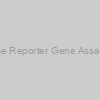 Amplite® Luciferase Reporter Gene Assay Kit *Bright Glow* |
|
12518-1plate |
AAT Bioquest |
1 plate |
EUR 166 |
|
|
|
Description: Common reporter genes include beta-galactosidase, beta-glucuronidase and luciferase. |
 Amplite® Luciferase Reporter Gene Assay Kit *Bright Glow* |
|
12519-10plates |
AAT Bioquest |
10 plates |
EUR 446 |
|
|
|
Description: Common reporter genes include beta-galactosidase, beta-glucuronidase and luciferase. |
 Amplite® Luciferase Reporter Gene Assay Kit *Bright Glow* |
|
12520-100plates |
AAT Bioquest |
100 plates |
EUR 3321 |
|
|
|
Description: Common reporter genes include beta-galactosidase, beta-glucuronidase and luciferase. |
) NF-κB Reporter Cellular Assay Pack (CHOK1) |
|
79325 |
BPS Bioscience |
2 vials |
EUR 1245 |
|
Description: The NF-κB Reporter Cellular Assay Pack provides all the key reagents required to monitor the activity of the nuclear factor Kappa B (NF-κB) signal transduction pathways. The pack contains the NF-κB Reporter (Luc)- CHO-K1 Recombinant Cell Line, a luciferase reporter cell line that contains a firefly luciferase gene under the control of four copies of the NF-κB response element located upstream of the minimal TATA promoter. After activation by pro-inflammatory cytokines or stimulants of lymphokine receptors, endogenous NF-κB transcription factors bind to the DNA response elements, inducing transcription of the luciferase reporter gene. This cell line is validated for the response to TNFalpha and to treatment with NF-κB inhibitor, evodiamine. _x000D_Additionally, the pack includes cell culture medium (Thaw Medium 3) that has been optimized for use with CHO-K1 cells. Thaw Medium 3 includes 10% fetal bovine serum and 1% Pen/Strep. Finally, the pack provides the ONE-Step™ Luciferase Detection System. This reagent provides highly sensitive, stable detection of firefly (Photinus pyralis) luciferase activity. The ONE-Step luciferase reagent can be used directly in cells in growth medium, and can be detected with any luminometer; automated injectors are not required. |
) NF-κB Reporter Cellular Assay Pack (HCT116) |
|
79326 |
BPS Bioscience |
2 vials |
EUR 1245 |
|
Description: The NF-κB Reporter Cellular Assay Pack provides all the key reagents required to monitor the activity of the nuclear factor Kappa B (NF-κB) signal transduction pathways. The pack contains the NF-κB Reporter (Luc)- HCT-116 Recombinant Cell Line, a luciferase reporter cell line that contains a firefly luciferase gene under the control of four copies of the NF-κB response element located upstream of the minimal TATA promoter. After activation by pro-inflammatory cytokines or stimulants of lymphokine receptors, endogenous NF-κB transcription factors bind to the DNA response elements, inducing transcription of the luciferase reporter gene. This cell line is validated for the response to TNFalpha and to treatment with NF-κB inhibitor, evodiamine._x000D_Additionally, the pack includes cell culture medium (Thaw Medium 7) that has been optimized for use with HCT-116 cells. Thaw Medium 7 includes 10% fetal bovine serum and 1% Pen/Strep. Finally, the pack provides the ONE-Step™ Luciferase Detection System. This reagent provides highly sensitive, stable detection of firefly (Photinus pyralis) luciferase activity. The ONE-Step luciferase reagent can be used directly in cells in growth medium, and can be detected with any luminometer; automated injectors are not required._x000D__x000D_ |
) NF-κB Reporter Cellular Assay Pack (HEK293) |
|
79327 |
BPS Bioscience |
2 vials |
EUR 1515 |
|
Description: The NF-κB Reporter Cellular Assay Pack provides all the key reagents required to monitor the activity of the nuclear factor Kappa B (NF-κB) signal transduction pathways. The pack contains the NF-κB Reporter (Luc)-HEK293 Recombinant Cell Line, a luciferase reporter cell line that contains a firefly luciferase gene under the control of four copies of the NF-κB response element located upstream of the minimal TATA promoter. After activation by pro-inflammatory cytokines or stimulants of lymphokine receptors, endogenous NF-κB transcription factors bind to the DNA response elements, inducing transcription of the luciferase reporter gene. This cell line is validated for the response to TNFalpha and to treatment with NF-κB inhibitor, evodiamine._x000D_Additionally, the pack includes cell culture medium (Thaw Medium 1) that has been optimized for use with HEK293 cells. Thaw Medium 1 includes 10% fetal bovine serum, non-essential amino acids, sodium pyruvate, and 1% Pen/Strep. Finally, the pack provides the ONE-Step™ Luciferase Detection System. This reagent provides highly sensitive, stable detection of firefly (Photinus pyralis) luciferase activity. The ONE-Step luciferase reagent can be used directly in cells in growth medium, and can be detected with any luminometer; automated injectors are not required._x000D_ |
 Amplite® Luciferase Reporter Gene Assay Kit *Maximized Luminescence* |
|
12519 |
AAT Bioquest |
10 plates |
EUR 455 |
|
Description: Common reporter genes include beta-galactosidase, beta-glucuronidase and luciferase. |
 Amplite® Gaussia Luciferase Reporter Gene Assay Kit *Bright Glow* |
|
12530-1plate |
AAT Bioquest |
1 plate |
EUR 222 |
|
|
|
Description: Common reporter genes include beta-galactosidase, beta-glucuronidase and luciferase. |
 Amplite® Gaussia Luciferase Reporter Gene Assay Kit *Bright Glow* |
|
12531-10Plates |
AAT Bioquest |
10 Plates |
EUR 846 |
|
|
|
Description: Common reporter genes include beta-galactosidase, beta-glucuronidase and luciferase. |
 Amplite® Gaussia Luciferase Reporter Gene Assay Kit *Bright Glow* |
|
12532-100plates |
AAT Bioquest |
100 plates |
EUR 4447 |
|
|
|
Description: Common reporter genes include beta-galactosidase, beta-glucuronidase and luciferase. |
 Amplite® Renilla Luciferase Reporter Gene Assay Kit *Bright Glow* |
|
12535-1plate |
AAT Bioquest |
1 plate |
EUR 222 |
|
|
|
Description: Common reporter genes include beta-galactosidase, beta-glucuronidase and luciferase. |
 Amplite® Renilla Luciferase Reporter Gene Assay Kit *Bright Glow* |
|
12536-10plates |
AAT Bioquest |
10 plates |
EUR 1070 |
|
|
|
Description: Common reporter genes include beta-galactosidase, beta-glucuronidase and luciferase. |
 Amplite® Renilla Luciferase Reporter Gene Assay Kit *Bright Glow* |
|
12537-100plates |
AAT Bioquest |
100 plates |
EUR 4447 |
|
|
|
Description: Common reporter genes include beta-galactosidase, beta-glucuronidase and luciferase. |
 Amplite® Renilla Luciferase Reporter Gene Assay Kit *Maximized Luminescence* |
|
12536 |
AAT Bioquest |
10 plates |
EUR 1092 |
|
Description: Common reporter genes include beta-galactosidase, beta-glucuronidase and luciferase. |
 Cell Line) Dual Notch1-YFP and Inducible Delta-mCherry Reporter CHO-K1 (hN1) Cell Line |
|
T3032 |
ABM |
1x10^6 cells / 1.0 ml |
EUR 3950 |
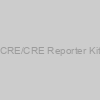 CRE/CRE Reporter Kit |
|
GWB-PS935F |
GenWay Biotech |
500reactions |
Ask for price |
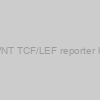 WNT TCF/LEF reporter kit |
|
GWB-PS656B |
GenWay Biotech |
500rxns. |
Ask for price |
) AP1 Reporter Kit (JNK Pathway) |
|
60612 |
BPS Bioscience |
500 rxns. |
EUR 565 |
|
Description: The AP1 Reporter Kit is designed for monitoring the activity of the JNK signaling pathway and the transcriptional activity of AP1 in cultured cells. The kit contains a transfection-ready AP1 luciferase reporter vector. This reporter contains the firefly luciferase gene under the control of multimerized AP1 responsive elements located upstream of a minimal promoter. The AP1 reporter is premixed with a constitutively-expressing Renilla (sea pansy) luciferase vector that serves as an internal control for transfection efficiency. The kit also includes a non-inducible firefly luciferase vector premixed with constitutively-expressing Renilla luciferase vector as a negative control. The non-inducible luciferase vector contains the firefly luciferase gene under the control of a minimal promoter, without any additional response elements. The negative control is critical for determining pathway-specific effects and the background luciferase activity. |
) AP1 Reporter Kit (JNK Pathway) |
|
GWB-PSB7DB |
GenWay Biotech |
500reactions |
Ask for price |
-YFP and Inducible Delta-mCherry Reporter CHO-K1 (hN1G4<sup>esn</sup>) Cell Line) Dual Notch1(Variant)-YFP and Inducible Delta-mCherry Reporter CHO-K1 (hN1G4<sup>esn</sup>) Cell Line |
|
T3033 |
ABM |
1x10^6 cells / 1.0 ml |
EUR 3950 |
 pLuc Reporter Vector |
|
110000 |
CH3 BioSystems |
each |
EUR 135 |
|
Description: A lucife |
) FOXO Reporter Kit (PI3K/AKT Pathway) |
|
60643 |
BPS Bioscience |
500 rxns. |
EUR 565 |
|
Description: The FOXO Reporter kit is designed to monitor activity of the PI3K/AKT signaling pathway and the transcriptional activity of FOXO proteins in cultured cells. The kit contains the transfection-ready FOXO3 expression vector and the FOXO luciferase reporter vector, which is a PI3K/Akt pathway-responsive reporter. This reporter contains a firefly luciferase gene under the control of multimers of the FOXO responsive element located upstream of a minimal promoter. The FOXO reporter is premixed with a constitutively-expressing Renilla (sea pansy) luciferase vector, which serves as an internal control for the transfection efficiency. The kit also includes a non-inducible firefly luciferase vector premixed with constitutively-expressing Renilla luciferase vector as negative control. The non-inducible luciferase vector also contains the firefly luciferase gene under the control of a minimal promoter, but without any additional response elements. The negative control is critical to determining pathway-specific effects and background luciferase activity. |
) Myc Reporter Kit (Myc Signaling Pathway) |
|
60519 |
BPS Bioscience |
500 rxns. |
EUR 625 |
|
Description: The Myc Pathway Reporter kit is designed for monitoring the activity of the Myc signaling pathway in cultured cells. The kit contains a transfection-ready expression vector for c- Myc and Myc luciferase reporter vector. Inside the cells, c-Myc will bind to Max, translocate to the nucleus, and induce expression of the Myc luciferase reporter vector. This reporter contains the firefly luciferase gene under the control of multimerized Myc responsive elements located upstream of a minimal promoter. The Myc reporter is premixed with constitutively-expressing Renilla (sea pansy) luciferase vector, which serves as an internal positive control for transfection efficiency._x000D_The kit also includes a non-inducible firefly luciferase vector premixed with constitutivelyexpressing Renilla luciferase vector as a negative control. The non-inducible luciferase vector contains a firefly luciferase gene under the control of a minimal promoter, but without any additional response elements. The negative control is critical for determining pathway-specific effects and background luciferase activity. |
) ARE Reporter Kit (Nrf2 Antioxidant Pathway ) |
|
60514 |
BPS Bioscience |
500 rxns. |
EUR 650 |
|
Description: The ARE Reporter kit is designed for monitoring the activity of the Nrf2 antioxidant pathway in cultured cells. The kit contains a transfection-ready ARE luciferase reporter vector, which is an Nrf2 pathway-responsive reporter. This reporter contains a firefly luciferase gene under the control of multimerized ARE responsive elements located upstream of a minimal promoter. The ARE reporter is premixed with a constitutively expressing Renilla (sea pansy) luciferase vector that serves as an internal control for transfection efficiency. The kit also includes a non-inducible firefly luciferase vector premixed with constitutively expressing Renilla luciferase vector as negative control. The non-inducible luciferase vector contains a firefly luciferase gene under the control of a minimal promoter, without any additional response elements. This negative control is critical to determining pathway-specific effects and background luciferase activity. |
) STAT3 Reporter Kit (STAT3 Signaling Pathway) |
|
79730 |
BPS Bioscience |
500 rxns. |
EUR 640 |
|
Description: The STAT3 Reporter kit is designed for monitoring the activity of the STAT3 signaling pathway in cultured cells. The kit contains transfection-ready STAT3 luciferase reporter vector. This reporter contains a firefly luciferase gene under the control of STAT3-responsive element located upstream of a minimal promoter. The STAT3 reporter is premixed with constitutively expressing Renilla luciferase vector, which serves as an internal control for transfection efficiency._x000D_
The kit also includes a non-inducible firefly luciferase vector premixed with constitutively-expressing Renilla luciferase vector as a negative control. The non-inducible luciferase vector contains the firefly luciferase gene under the control of a minimal promoter, without any additional response elements. The negative control is critical to determining pathway-specific effects and background luciferase activity. |
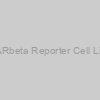 RARbeta Reporter Cell Line |
|
GWB-PS5D33 |
GenWay Biotech |
~2x10(6)cells |
Ask for price |
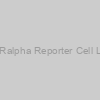 RARalpha Reporter Cell Line |
|
GWB-PSA34A |
GenWay Biotech |
~2x10(6)cells |
Ask for price |
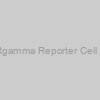 RARgamma Reporter Cell Line |
|
GWB-PSB42E |
GenWay Biotech |
~2x10(6)cells |
Ask for price |
) TCF/LEF Reporter Kit (Wnt Signaling Pathway) |
|
60500 |
BPS Bioscience |
500 rxns. |
EUR 655 |
|
Description: The TCF/LEF Reporter kit is designed for monitoring the activity of Wnt / β-catenin signaling pathway in the cultured cells. The kit contains transfection-ready TCF/LEF luciferase reporter vector, which is a Wnt pathway-responsive reporter. This reporter contains a firefly luciferase gene under the control of multimerized TCF/LEF responsive element located upstream of a minimal promoter. The TCF/LEF reporter is premixed with constitutively-expressing Renilla luciferase vector that serves as internal control for transfection efficiency. _x000D_The kit also includes a non-inducible firefly luciferase vector premixed with constitutively-expressing Renilla luciferase vector as negative control. The non-inducible luciferase vector contains a firefly luciferase gene under the control of a minimal promoter, without any additional response elements. The negative control is critical to determining pathway specific effects and background luciferase activity. _x000D_ |
) SRE Reporter Kit (MAPK/ERK Signaling Pathway ) |
|
60511 |
BPS Bioscience |
500 rxns. |
EUR 595 |
|
Description: The SRE Reporter Kit is designed for monitoring the activity of the ERK signaling pathway and the transcriptional activity of SRF in cultured cells. The kit contains a transfection-ready SRE luciferase reporter vector, which is an ERK pathway-responsive reporter. This reporter contains the firefly luciferase gene under the control of multimerized SRE responsive elements located upstream of a minimal promoter. The SRE reporter is premixed with a constitutively-expressing Renilla (sea pansy) luciferase vector that serves as an internal control for transfection efficiency. The kit also includes a non-inducible firefly luciferase vector premixed with constitutively-expressing Renilla luciferase vector as a negative control. The non-inducible luciferase vector contains the firefly luciferase gene under the control of a minimal promoter, without any additional response elements. The negative control is critical for determining pathway-specific effects and the background luciferase activity. |
) SRE Reporter Kit (MAPK/ERK Signaling Pathway ) |
|
GWB-PS60EE |
GenWay Biotech |
500reactions |
Ask for price |
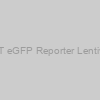 NFAT eGFP Reporter Lentivirus |
|
79922 |
BPS Bioscience |
500 µl x 2 |
EUR 875 |
|
Description: The NFAT eGFP Reporter Lentivirus are replication incompetent, HIV-based, VSV-G pseudotyped lentiviral particles that are ready to be transduced into almost all types of mammalian cells, including primary and non-dividing cells. The particles contain an enhanced GFP gene driven by the NFAT response element located upstream of the minimal TATA promoter. After transduction, activation of the NFAT signaling pathway in the target cells can be monitored by examining eGFP expression._x000D_ |
 Reporter cell line generation |
|
S302 |
101Bio |
- |
EUR 15000 |
) ISRE Reporter Kit (JAK/STAT Signaling Pathway) |
|
60613 |
BPS Bioscience |
500 rxns. |
EUR 565 |
|
Description: The ISRE Reporter kit is designed for monitoring the activity of Type I interferon-induced JAK/STAT signaling pathway in the cultured cells. The kit contains transfection-ready ISRE luciferase reporter vector, which is a JAK/STAT pathway-responsive reporter. This reporter contains a firefly luciferase gene under the control of multimerized ISRE responsive element located upstream of a minimal promoter. The ISRE reporter is premixed with constitutively-expressing Renilla (sea pansy) luciferase vector, which serves as an internal control for transfection efficiency. The kit also includes a non-inducible firefly luciferase vector premixed with constitutively-expressing Renilla luciferase vector as a negative control. The noninducible luciferase vector contains a firefly luciferase gene under the control of a minimal promoter, without any additional response elements. The negative control is critical to determining pathway specific effects and background luciferase activity. |
) SBE Reporter Kit (TGFβ/SMAD signaling pathway) |
|
60654 |
BPS Bioscience |
500 rxns. |
EUR 595 |
|
Description: The SBE Reporter kit is designed for monitoring the activity of TGFβ/SMAD signaling pathway in the cultured cells. The kit contains transfection-ready SBE luciferase reporter vector, which is a TGFβ pathway-responsive reporter. This reporter contains a firefly luciferase gene under the control of multimerized SBE responsive element located upstream of a minimal promoter. The SBE reporter is premixed with constitutively-expressing Renilla luciferase vector that serves as internal control for transfection efficiency. The kit also includes a non-inducible firefly luciferase vector premixed with constitutively-expressing Renilla luciferase vector as negative control. The noninducible luciferase vector contains a firefly luciferase gene under the control of a minimal promoter, without any additional response elements. The negative control is critical to determining pathway-specific effects and background luciferase activity. |
) FOXO Reporter Kit (PI3K/AKT Signaling Pathway) |
|
GWB-PS252F |
GenWay Biotech |
500reactions |
Ask for price |
 STAT3 eGFP Reporter Lentivirus |
|
78197 |
BPS Bioscience |
500 µl x 2 |
EUR 795 |
|
Description: The STAT3 eGFP Reporter Lentiviruses are replication incompetent, HIV-based, VSV-G pseudotyped lentiviral particles that are ready to be transduced into almost all types of mammalian cells, including primary and non-dividing cells. The particles contain an eGFP gene under the control of a STAT3-responsive element located upstream of the minimal TATA promoter . After transduction, activation of the STAT3 signaling pathway in the target cells can be monitored by examining eGFP expression. |
 Human ARE Reporter Cell Line |
|
ABC-RC0079 |
AcceGen |
1 vial |
Ask for price |
|
Description: Human ARE Reporter Cell Line are suitable to monitor Nrf2 antioxidant response pathway activity.and screen for activators or inhibitors of the Nrf2 antioxidant response pathway. |
 Human Myc Reporter Cell Line |
|
ABC-RC0108 |
AcceGen |
1 vial |
Ask for price |
|
Description: Human Myc Reporter Cell Line is used to monitor Myc pathway activity and screen for activators or inhibitors of the Myc pathway. |
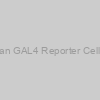 Human GAL4 Reporter Cell Line |
|
ABC-RC0086 |
AcceGen |
1 vial |
Ask for price |
|
Description: Human GAL4 Reporter Cell Line is an ideal product for monitoring biological activity |
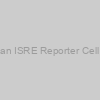 Human ISRE Reporter Cell Line |
|
ABC-RC0101 |
AcceGen |
1 vial |
Ask for price |
|
Description: Human ISRE Reporter Cell Line can be used for the following applications: • Monitor IFNa-induced activity and the JAK/STAT pathway activity.• Screen for activators or inhibitors of the JAK/STAT signaling pathway. |
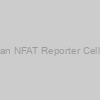 Human NFAT Reporter Cell Line |
|
ABC-RC0113 |
AcceGen |
1 vial |
Ask for price |
|
Description: Human NFAT Reporter Cell Line can be used as follows: • Monitor intracellular calcium levels. • Screen for activators or inhibitors of PKC/ Ca2+ pathway. • Screen for agonists or antagonists of T cell receptors. • Control for immune checkpoint NFAT reporter cell lines. |
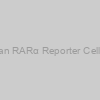 Human RARα Reporter Cell Line |
|
ABC-RC0119 |
AcceGen |
1 vial |
Ask for price |
|
Description: The RARa Reporter (Luc)-HEK293 Cell Line is designed for monitoring the activity of retinoic acid receptor alpha (RARa). Application: • Monitor RARa-regulated pathway activity• Screen agonists or antagonists of RAR?. |
 CSL Reporter - HEK293 Cell line |
|
79754 |
BPS Bioscience |
2 vials |
EUR 2275 |
|
Description: The Notch CSL Reporter - HEK293 cell line contains the firefly luciferase gene under the control of Notch-response elements (CSL responsive elements) stably integrated into HEK293 cells. Transfection of this cell line with a Notch expression vector and activation of the Notch pathway leads to expression of luciferase reporter. This cell line is validated with a Notch1DelE expression vector, which is constitutively processed by γ-secretase, leading to the release of NICD and the expression of luciferase. |
) GAL4 Reporter Kit (Glucocorticoid Receptor Pathway) |
|
60522 |
BPS Bioscience |
500 rxns. |
EUR 565 |
|
Description: The Glucocorticoid Receptor Pathway Reporter Kit is designed for monitoring the activity of the glucocorticoid signaling pathway in cultured cells. The kit contains a transfection-ready expression vector for the glucocorticoid receptor ligand binding domain that is fused to the DNA binding domain (DBD) of GAL4 (GAL4 DBD-GR). This fusion construct activates firefly luciferase expression under the control of a multimerized GAL4 upstream activation sequence (UAS). This allows for specific detection of glucocorticoid-induced activation of the glucocorticoid receptor without the need for individual transcriptional targets and with low crossreactivity for other nuclear receptor pathways. The GAL4/UAS reporter is premixed with constitutively expressing Renilla (sea pansy) luciferase vector, which serves as an internal positive control for transfection efficiency.
The kit also includes a non-inducible firefly luciferase vector premixed with constitutivelyexpressing Renilla luciferase vector as a negative control. The non-inducible luciferase vector contains a firefly luciferase gene under the control of a minimal promoter, but without any additional response elements. The negative control is critical for determining pathway-specific effects and background luciferase activity. |
) NF-κB Reporter Kit (NF-κB Signaling Pathway) |
|
60614 |
BPS Bioscience |
500 rxns. |
EUR 650 |
|
Description: The NF-κB Reporter kit is designed for monitoring the activity of the NF-κB signaling pathway in the cultured cells. The kit contains transfection-ready NF-κB luciferase reporter vector. This reporter contains a firefly luciferase gene under the control of multimerized NF-κB responsive element located upstream of a minimal promoter. The NF-κB reporter is premixed with constitutively-expressing Renilla (sea pansy) luciferase vector, which serves as an internal control for transfection efficiency. The kit also includes a non-inducible firefly luciferase vector premixed with constitutively-expressing Renilla luciferase vector as a negative control. The non-inducible luciferase vector contains a firefly luciferase gene under the control of a minimal promoter, without any additional response elements. The negative control is critical to determining pathway specific effects and background luciferase activity. |
 STAT3 Reporter Jurkat Cell Line |
|
78497 |
BPS Bioscience |
2 vials |
EUR 1900 |
|
Description: The STAT3 Reporter Jurkat cell line is designed for monitoring the STAT3 signal transduction pathway. It contains a firefly luciferase gene driven by STAT3 response elements located upstream of the minimal TATA promoter. After activation by cytokines or growth factors, endogenous STAT3 binds to the DNA response elements, inducing transcription of the luciferase reporter gene. |
 GFP Reporter Cell Line-HEK293 |
|
ABC-RC0001 |
AcceGen |
1 vial |
Ask for price |
|
Description: GFP Reporter Cell Line-293 stably expresses GFP and blasticidin-resistant genes.Both GFP and blasticidin-resistant genes are introduced into parental 293 cells using lentivirus. |
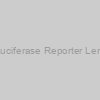 SRE Luciferase Reporter Lentivirus |
|
78627 |
BPS Bioscience |
500 µl x 2 |
EUR 835 |
|
Description: The SRE (Serum Response Element) Luciferase Reporter Lentiviruses are replication incompetent, HIV-based, VSV-G pseudotyped lentiviral particles that are ready to be transduced into almost all types of mammalian cells, including primary and non-dividing cells. The particles contain a firefly luciferase gene driven by the Serum Response Element located upstream of the minimal TATA promoter . After transduction, activation of the MAPK/ERK signaling pathway in the target cells can be monitored by measuring the luciferase activity. |
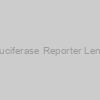 Myc Luciferase Reporter Lentivirus |
|
78628 |
BPS Bioscience |
500 µl x 2 |
EUR 835 |
|
Description: The Myc Luciferase Reporter Lentiviruses are replication incompetent, HIV-based, VSV-G pseudotyped lentiviral particles that are ready to transduce almost all types of mammalian cells, including primary and non-dividing cells. The particles contain a firefly luciferase gene driven by the Myc response element located upstream of the minimal TATA promoter and an antibiotic selection gene (puromycin) for the selection of stable clones. After transduction, the Myc signaling pathway in the target cells can be monitored by measuring the luciferase activity. |
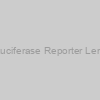 UAS Luciferase Reporter Lentivirus |
|
78631 |
BPS Bioscience |
500 µl x 2 |
EUR 835 |
|
Description: The UAS (Upstream Activation Sequence) Luciferase Reporter Lentiviruses are replication incompetent, HIV-based, VSV-G pseudotyped lentiviral particles that are ready to transduce almost all types of mammalian cells, including primary and non-dividing cells. The particles contain a firefly luciferase gene driven by a multimerized GAL4 upstream activation sequence (UAS) located upstream of the minimal TATA promoter and an antibiotic selection gene (puromycin) for the selection of stable clones. After transduction, the UAS-controlled signaling pathway in the target cells can be monitored by measuring the luciferase activity. |
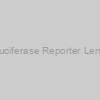 p53 Luciferase Reporter Lentivirus |
|
78666 |
BPS Bioscience |
500 µl x 2 |
EUR 835 |
|
Description: The p53 Luciferase Reporter Lentiviruses are replication incompetent, HIV-based, VSV-G pseudotyped lentiviral particles that are ready to transduce most types of mammalian cells, including primary and non-dividing cells. The particles contain a firefly luciferase gene driven by p53 response elements located upstream of the minimal TATA promoter (Figure 1) and an antibiotic selection gene (puromycin) for the selection of stable clones. After transduction, p53-regulated gene expression in the target cells can be monitored by measuring the luciferase activity. |
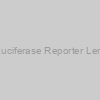 HRE Luciferase Reporter Lentivirus |
|
78668 |
BPS Bioscience |
500 µl x 2 |
EUR 835 |
|
Description: The Hypoxia Response Element (HRE) Luciferase Reporter Lentiviruses are replication incompetent, HIV-based, VSV-G pseudotyped lentiviral particles that are ready to transduce most types of mammalian cells, including primary and non-dividing cells. The particles contain a firefly luciferase gene driven by four copies of a hypoxia response elements (HRE) located upstream of the minimal TATA promoter (Figure 1) and an antibiotic selection gene (puromycin) for the selection of stable clones. After transduction, the induction of hypoxia in the target cells can be monitored by measuring the luciferase activity. |
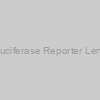 ARE Luciferase Reporter Lentivirus |
|
79869 |
BPS Bioscience |
500 µl x 2 |
EUR 875 |
|
Description: The Nrf2 antioxidant response pathway plays an important role in the cellular antioxidant defense. Nrf2, a basic leucine zipper transcription factor, induces the expression of antioxidant and phase II enzymes by binding to the ARE (antioxidant response element) region of the gene promoter. Under basal conditions, Nrf2 is retained in the cytosol by binding to the cytoskeletal protein Keap1. Upon exposure to oxidative stress or other ARE activators, Nrf2 is released from Keap1 and translocates to the nucleus, where it can bind to the ARE, leading to the expression of antioxidant and phase II enzymes that protect the cell from oxidative damage.
The ARE Luciferase Reporter Lentivirus are replication incompetent, HIV-based, VSV-G pseudotyped lentiviral particles that are ready to be transduced into almost all types of mammalian cells, including primary and non-dividing cells. The particles contain a firefly luciferase gene driven by ARE located upstream of the minimal TATA promoter. After transduction, activation of the Nrf2 antioxidant response pathway in the target cells can be monitored by measuring the luciferase activity. |
 NF-κB eGFP Reporter Lentivirus |
|
79926 |
BPS Bioscience |
500 µl x 2 |
EUR 820 |
|
Description: The NF-κB eGFP Reporter Lentivirus are replication incompetent, HIV-based, VSV-G pseudotyped lentiviral particles that are ready to infect almost all types of mammalian cells, including primary and non-dividing cells. The particles contain an enhanced GFP gene driven by the NF-κB response element located upstream of the minimal TATA promoter. After transduction, activation of the NF-κB signaling pathway in the target cells can be monitored by examining eGFP expression. |
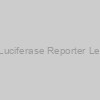 TEAD Luciferase Reporter Lentivirus |
|
79833 |
BPS Bioscience |
500 µl x 2 |
EUR 875 |
|
Description: The Hippo pathway regulates cell proliferation and cell death. It is activated by high cell density and cell stress to stop cell proliferation and induce apoptosis. The mammalian Hippo pathway comprises MST kinases and LATS kinases. When the Hippo pathway is activated, MST kinases phosphorylate LATS kinases, which phosphorylate transcriptional co-activators YAP and TAZ. Unphosphorylated YAP and TAZ remain in nucleus and interact with TEAD/TEF transcriptional factors to turn on cell cycle-promoting gene transcription. However, when phosphorylated, YAP and TAZ are recruited from the nucleus to the cytosol, so that the YAP and TAZ-dependent gene transcription is turned off. Dysfunction of the Hippo pathway is frequently detected in human cancer and its down-regulation correlates with the aggressive properties of cancer cells and poor prognosis.
The TEAD Luciferase Reporter Lentivirus are replication incompetent, HIV-based, VSV-G pseudotyped lentiviral particles that are ready to be transduced into almost all types of mammalian cells, including primary and non-dividing cells. The particles contain a firefly luciferase gene driven by the TEAD response elements located upstream of the minimal TATA promoter. After transduction, activation of the Hippo pathway in the target cells can be monitored by measuring the luciferase activity._x000D_ |
) CRE/CREB Reporter Kit (cAMP/PKA Signaling Pathway) |
|
60611 |
BPS Bioscience |
500 rxns. |
EUR 590 |
|
Description: The CRE/CREB Reporter kit is designed for monitoring the activity of the cAMP/PKA signaling pathway in cultured cells. The kit contains transfection-ready CRE luciferase reporter. This reporter contains the firefly luciferase gene under the control of multimerized cAMP response element (CRE) located upstream of a minimal promoter. Elevation of the intracellular cAMP level activates cAMP response element binding protein (CREB) to bind CRE and induces the expression of luciferase. The CRE reporter is premixed with constitutively-expressing Renilla (sea pansy) luciferase vector that serves as an internal control for transfection efficiency. The kit also includes a non-inducible firefly luciferase vector premixed with the constitutivelyexpressing Renilla luciferase vector as a negative control. The non-inducible luciferase vector contains the firefly luciferase gene under the control of a minimal promoter, but without any additional response elements. The negative control is critical to determining pathway-specific effects and background luciferase activity. |
 CRE/CREB eGFP Reporter Lentivirus |
|
78153 |
BPS Bioscience |
500 µl x 2 |
EUR 795 |
|
Description: The CRE/CREB eGFP Reporter Lentiviruses are replication incompetent, HIV-based, VSV-G pseudotyped lentiviral particles that are ready to be transduced into almost all types of mammalian cells, including primary and non-dividing cells. The particles contain an eGFP gene driven by a multimerized cAMP response element (CRE) located upstream of the minimal TATA promoter . After transduction, activation of the cAMP/PKA signaling pathway in the target cells can be monitored by examining eGFP expression. |
 STAT3 Luciferase Reporter Lentivirus |
|
79744 |
BPS Bioscience |
500 µl x 2 |
EUR 860 |
|
Description: The STAT3 Luciferase Reporter Lentivirus are replication incompetent, HIV-based, VSV-G pseudotyped lentiviral particles that are ready to be transduced into almost all types of mammalian cells, including primary and non-dividing cells. The particles contain a firefly luciferase gene under the control of STAT3-responsive element located upstream of the minimal TATA promoter. After transduction, activation of the STAT3 signaling pathway in the target cells can be monitored by measuring the luciferase activity._x000D_ |
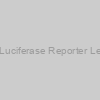 STAT5 Luciferase Reporter Lentivirus |
|
79745 |
BPS Bioscience |
500 µl x 2 |
EUR 835 |
|
Description: The STAT5 Luciferase Reporter Lentivirus are replication incompetent, HIV-based, VSV-G pseudotyped lentiviral particles that are ready to be transduced into almost all types of mammalian cells, including primary and non-dividing cells. The particles contain a firefly luciferase gene under the control of STAT5-responsive element located upstream of the minimal TATA promoter. After transduction, activation of the STAT5 signaling pathway in the target cells can be monitored by measuring the luciferase activity. |
) CSF1R / SRE Reporter Kit (MAPK/ERK Signaling Pathway) |
|
79379 |
BPS Bioscience |
500 rxns. |
EUR 615 |
|
Description: The CSF1R SRE Reporter Kit is designed for monitoring the activity of the CSF1R signaling pathway in cultured cells. The kit contains a transfection-ready vector for CSF1R and SRE luciferase reporter vector. Upon ligand binding, active CSF1R will initiate the MAPK/ERK signaling pathway, leading to expression of the SRE-controlled reporter. This reporter contains the firefly luciferase gene under the control of multimerized SRE responsive elements located upstream of a minimal promoter. The SRE reporter is premixed with a constitutively-expressing Renilla luciferase vector that serves as an internal control for transfection efficiency._x000D_The kit also includes a non-inducible firefly luciferase vector premixed with constitutively- expressing Renilla luciferase vector as a negative control. The non-inducible luciferase vector contains the firefly luciferase gene under the control of a minimal promoter, without any additional response elements. The negative control is critical for determining pathway-specific effects and the background luciferase activity. |
 Magnetic Luminex Assay Kit) Notch Homolog 2 (NOTCH2) Magnetic Luminex Assay Kit |
|
LKU606844-96T |
Biomatik Corporation |
96T |
EUR 1062.6 |
 Magnetic Luminex Assay Kit) Notch Homolog 3 (NOTCH3) Magnetic Luminex Assay Kit |
|
LKU606845-96T |
Biomatik Corporation |
96T |
EUR 1062.6 |
 Magnetic Luminex Assay Kit) Notch Homolog 4 (NOTCH4) Magnetic Luminex Assay Kit |
|
LKU606846-96T |
Biomatik Corporation |
96T |
EUR 1062.6 |
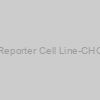 GFP Reporter Cell Line-CHO/Blas |
|
ABC-RC0001L |
AcceGen |
1vial |
Ask for price |
|
Description: This CHO GFP Stable Cell Line is transformed from the CHO cells, andnbsp;stably expressing the humanizedandnbsp;GFPandnbsp;fluorescent protein. It was established by transduction of the enhanced GFP expression lentivirus containing aandnbsp;Blasticidinandnbsp;resistance marker. GFP is constitutively expressed at a high-level under the enhanced CMV promoter (suCMV).andnbsp |
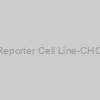 GFP Reporter Cell Line-CHO/Puro |
|
ABC-RC002L |
AcceGen |
1 vial |
Ask for price |
|
Description: This CHO GFP Stable Cell Line is transformed from the CHO cells, andnbsp;stably expressing the humanizedandnbsp;GFPandnbsp;fluorescent protein. It was established by transduction of the enhanced GFP expression lentivirus containing aandnbsp;Puromycin resistance marker. GFP is constitutively expressed at a high-level under the enhanced CMV promoter (suCMV).andnbsp |
 Human HRE Reporter Cell Line–HeLa |
|
ABC-RC0095 |
AcceGen |
1 vial |
Ask for price |
|
Description: Human HRE Reporter Cell Line is derived from HeLa cell. Gentaur can provide high quality reporter cell line for monitoring biological activity |
 Human ATF6 Reporter Cell Line–HeLa |
|
ABC-RC0080 |
AcceGen |
1 vial |
Ask for price |
|
Description: Human ATF6 Reporter Cell Line is derived from HeLa cells. It can be used for monitoring biological activity |
 Human GR-GAL4 Reporter Cell Line |
|
ABC-RC0091 |
AcceGen |
1 vial |
Ask for price |
|
Description: Human GR-GAL4 Reporter Cell Line is an ideal product to monitor glucocorticoid signaling pathway activity and screen activators or inhibitors of the glucocorticoid signaling pathway. |
 - Jurkat Cell Line) NFAT Reporter (Luc) - Jurkat Cell Line |
|
60621 |
BPS Bioscience |
2 vials |
EUR 2295 |
|
Description: The NFAT Reporter - Jurkat Cell Line contains a firefly luciferase gene under the control of the_x000D_NFAT response element stably integrated into Jurkat cells. This cell line has been validated for_x000D_response to thapsigargin, ionomycin, and phorbol 12-myristate 13-acetate (PMA). It is useful as_x000D_a control cell line for other NFAT reporter cell lines expressing various immune checkpoint_x000D_receptors. |
-HEK293 Cell Line) GAL4 Reporter (Luc)-HEK293 Cell Line |
|
60656 |
BPS Bioscience |
2 vials |
EUR 1095 |
|
Description: The GAL4 Reporter (Luc) - HEK293 Cell Line contains a firefly luciferase gene under the control of a multimerized GAL4 upstream activation sequence (UAS) stably integrated into HEK293 cells. The cell line does not contain any exogenous activators of the GAL4 reporter and can be used alongside BPS Cat. #60655 as a control. |
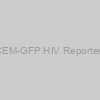 Rev-CEM-GFP HIV Reporter Cells |
|
HRC-4 |
101Bio |
1 vial of 5x10⁶ cells |
EUR 1500 |
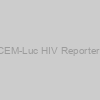 Rev-CEM-Luc HIV Reporter Cells |
|
HRC-6 |
101Bio |
1 vial of 5x10⁶ cells |
EUR 1500 |
 TLR8-NF-κB Stable Reporter 293 Cell Line |
|
T6412 |
ABM |
1x10^6 cells / 1.0 ml |
EUR 3950 |
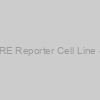 Human SRE Reporter Cell Line - HEK293 |
|
ABC-RC0122 |
AcceGen |
1 vial |
Ask for price |
|
Description: Human SRE Reporter Cell Line is derived from HEK293. Application: • Monitor MAPK/ERK signaling pathway activity and SRF-mediated activity.• Screen for activators or inhibitors of the MAPK/ERK signaling pathway. |
 PDE7A/CRE Reporter - HEK293 Cell Line |
|
60413 |
BPS Bioscience |
2 vials |
EUR 9270 |
|
Description: The PDE7A/CRE Reporter-HEK293 line contains the firefly luciferase gene under the control of CRE as well as a constitutive expression construct for human PDE7A (phosphodiesterase 7A, accession number NM_002603), both stably integrated into HEK293 cells. The luciferase expression level from the CRE reporter is used to monitor the activity of PDE7A in the cells. |
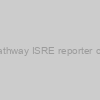 JAK pathway ISRE reporter cell line |
|
GWB-PSC83D |
GenWay Biotech |
1.5x10(6)cells |
Ask for price |
 - Ba/F3 Cell line) STAT5 Reporter (Luc) - Ba/F3 Cell line |
|
79772 |
BPS Bioscience |
2 vials |
EUR 2275 |
|
Description: The STAT5 Reporter (Luc)-Ba/F3 cell line is designed for monitoring STAT5 signal transduction pathways. It contains a firefly luciferase gene driven by the STAT5 response element located upstream of the minimal TATA promoter. After activation by cytokines or growth factors, endogenous STAT5 binds to the DNA response elements, inducing transcription of the luciferase reporter gene. |
 - THP-1 Cell line) IRF Reporter (Luc) - THP-1 Cell line |
|
79858 |
BPS Bioscience |
2 vials |
EUR 1810 |
|
Description: The Interferon Regulatory Factor (IRF) reporter (Luc)-THP-1 cell line is designed to study the activation and signaling of Cytosolic DNA Sensors (CDS) in human monocytic cell line THP-1. It contains a firefly luciferase gene driven by multimerized ISRE (Interferon Stimulated Response Element) located upstream of the minimal TATA promoter. _x000D_The cGAS-STING pathway acts to detect cytosolic DNA and induce an immune response. Briefly, upon binding DNA, the protein cGAS (cyclic GMP-AMP Synthase) triggers reaction of GTP and ATP to form cGAMP. cGAMP binds to STING (Stimulator of Interferon Genes) which triggers phosphorylation of IRF3 via TBK1. IRF3 can then bind to interferon-stimulated responsive elements (ISRE) in the nucleus and leads to IFN-α/β production. The IRF reporter (Luc)-THP-1 cell line is highly responsive to STING and CDS ligands. |
Following standard science journalism, #FungalPeeps, a challenge initiated at West Virginia University, impressed a mycology analysis challenge in Notre Dame High School in San Jose, California. Herein, we describe how this connection between academia, journalists, and the highschool classroom occurred, and the way everybody concerned benefited from this academic collaboration. We additional counsel ways in which fashionable social media networks could possibly be leveraged to include extra such sensible studying experiences into progressive science curricula to higher domesticate younger STEM scientists.


